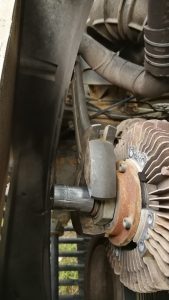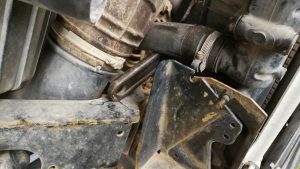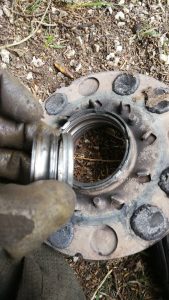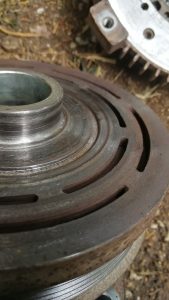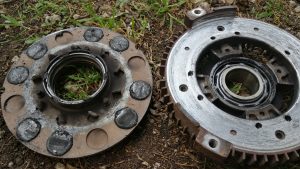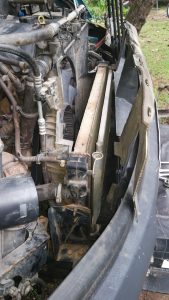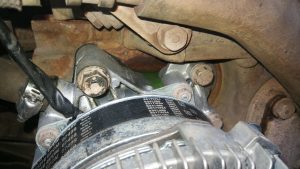It started with a general rattling noise, but it was quite hard to tell where it was coming from. At one point I thought it was a tappet or the timing chain. Then I noticed the fan didn’t spin freely, engine off, pushing with a finger. Eventually, it started to make a really bad squealing sound, then the fan coupling finally died. It’s lasted 165,000 km, so I will put it down to fair wear and tear. Basically, the clutch was slowly becoming less and less effective until there was no drive to the fan. The truck was at about 5,800 kg and 500 m above sea level when it failed. We had to drive over a hill of 2,400 m, needing a climb of 1,900 m with no cooling fan! It was 30C at 500 m and dropped to 21C at 2400 m. We had the heater on full-blast with the windows open. I allowed the engine to get to ¾ on the temperature gauge, then would stop and leave the engine idling until it was back down to just over ½. This meant it took a little while to get up the hill, but on the level sections I could drive normally, even through towns, without the temperature gauge going above half. I love this truck.
We ordered a new fan coupling from Vexi.co.uk and had it shipped by DHL to us here in Mexico.
To replace the fan coupling, I removed the bumper and intercooler then moved the power steering cooling loop to one side. I could then unbolt the radiator and move it forward out of its mounting brackets a couple of inches. It wasn’t necessary to disconnect the power steering cooling loop, air conditioning or cooling system.
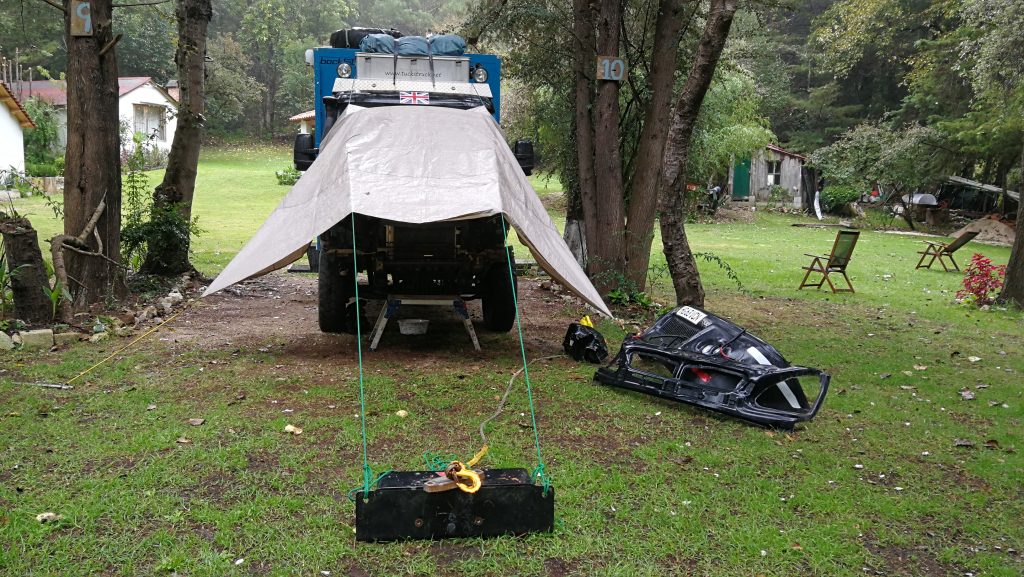
No stopping because of the rain!
With the radiator moved forward it’s quite easy to access the front of the fan to unbolt it from the coupling. The big nut is a reverse thread, I found I could fit my large adjustable spanner on the nut and locked it against the chassis. I then used an M12 Alan socket (it’s actually a M13 (1/2”) size Alan hole but M12 was the biggest I had, and it worked) to turn the centre shaft to undo the nut.
- Adjustable spanner locking the fan coupling nut. Allan bolt socket installed ready to undo the nut
- The adjustable spanner locked against the chassis
I used a spanner on the alternator tensioner to slacken the belt enough to remove it, but I was able to leave the AC belt on. The outer coupling and pulley just slid off the shaft. I then unbolted the electromagnet from the water pump and I decided to change the water pump at the same time. There didn’t seem to be anything wrong with the old pump and I will be keeping it as a spare, but Sod’s Law says that if I don’t change it now, it will probably fail soon after me having the whole truck apart 🙂
Then I put it all back together….
The water pump is part number 504369725 and needs a gasket 504080013 and ‘O’ ring 17285681, the fan coupling is 5801598372.
After taking the old fan coupling out, I investigated… The centre support bearing in the coupling had failed. All the ball bearings were contained within the housing. With the collapsed bearing, the clutch surfaces had had excessive wear, which is why we had eventually lost all drive to the fan.
- What’s left of the centre bearing!
- The groves warn into the pully by the clutch
- The fan couplings centre section. The magnets hit the fan coupling body when the centre bearing failed
What I can say is that the job can be done without removing the bumper. How do I know this? Well, the new water pump that I fitted started leaking!
- Its a squeeze but you camn access the fan coupling without removing the bumper
- The water leak from the water pump!
A genuine Iveco pump with gasket and ‘O’ ring fitted. When I first installed it, the gasket leaked slightly when I filled the cooling system. So I used some sealing compound on the metal gasket before reassembling. Unfortunately, once up to pressure it started to leak again. I strip it all apart again but this time without removing the winch and bumper and fitted a new gasket. Lucky that I carry so many spares! That fixed it.
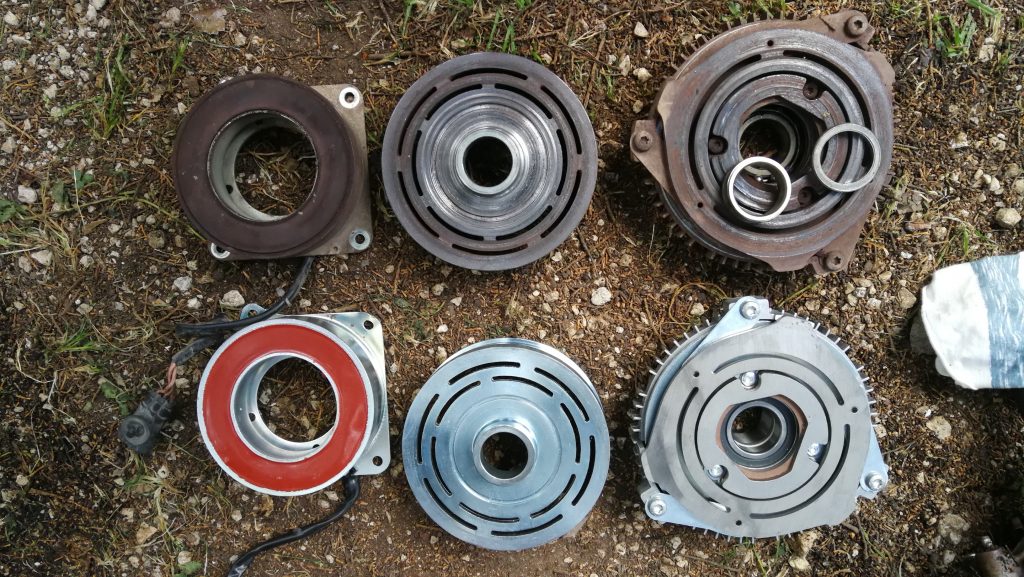
The old fan coupling next to the new. Electro magnet on the left, pully in the middle and clutch assembly on the right
I’ve always wondered how the 2 speed thing worked on the fan coupling, now I know. When the low speed is selected, the electromagnet engages the centre clutch. Attached to this centre clutch is a disc with 8 small but powerful magnets. They are forced to spin at the pulley speed. As they spin, the magnets drag the outer body of the coupling around by magnetic force (like how the old mechanical speedos used to work). As the fan creates a lot of drag, the magnets can’t turn it a full pulley speed and you get the lower speed. When the second clutch is energised, it engages the outer body of the coupling directly to the pulley and so you get full fan speed.
Hey… was this useful? If so, you might like to support our website costs with a donation below. Thanks 😊👍

